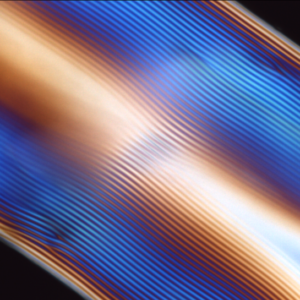Liquid crystals*, well-known for their use in flat screens, are also prevalent in biological processes and the living world. Similar to the twisted configuration of molecules in flat screens, these molecules spontaneously arrange in a helical structure in most biological liquid crystals (DNA, collagen, etc.), a specific organization known as “cholesteric”**.
The molecules that make up these liquid crystals possess a fundamental property called chirality***. It is the propagation of this chirality at the supramolecular scale that leads to these helical morphologies and raises many fundamental questions. Two researchers from the Centre de recherche Paul-Pascal (CNRS / Université de Bordeaux) and the ENS Lyon (CNRS / Université de Claude Bernard) have recently shed light on these questions by studying cholesteric liquid crystals based on bacteriophages, viruses that infect bacteria. Taking advantage of the versatility of these systems and combining experiments and simulations, they have successfully identified the complex interactions occurring at different scales between chiral molecules leading to the macroscopic helicity observed in these liquid crystals.
Understanding these chirality transfer mechanisms from molecules to helical morphologies is crucial for both fundamental research and application prospects in fields such as biomaterials or regenerative medicine. The results are published in the journal Nature Materials.
* Liquid crystals are stable states of matter that exhibit both the properties of a liquid (fluidity) and the properties (optical) of a crystalline solid.
** In reference to cholesterol derivatives in which it was first observed in the 19th century.
*** Just like your two hands, a molecule is said to be chiral if it is not superimposable on its mirror image.

Polarising optical microscopy image of viruses organised in a cholesteric liquid crystal phase. © Eric Grelet
Reference
E. Grelet & M. Tortora
Elucidating chirality transfer in liquid crystals of viruses
Nature Materials 2024
https://www.nature.com/articles/s41563-024-01897-x
Contact
Eric Grelet
Researcher at Centre de recherche Paul Pascal
For more information, please read the CNRS-CHimie communication
